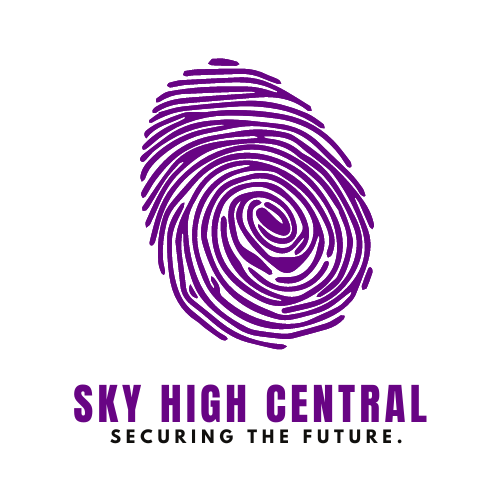Social media has evolved beyond a tool for external communication; it is now integral to Human Resource (HR) practices, playing a significant role in enhancing employee engagement and transforming HR functions. Platforms like LinkedIn, Twitter, Facebook, and even newer platforms like Instagram and TikTok are becoming key to the way companies recruit, engage, and retain talent. The use of social media in HR is not just a trend but a strategic shift that organizations are embracing to streamline HR processes and improve employee satisfaction.
This article explores how social media is reshaping HR practices, with a focus on employee engagement, recruitment, and overall HR strategy.
Social Media as a Catalyst for Employee Engagement
Employee engagement is a critical factor influencing productivity, retention, and the overall success of an organization. Engagement refers to the level of emotional commitment employees have toward their work and organization.
Traditionally, engagement was measured by periodic surveys, in-person feedback sessions, and other methods. However, social media has introduced a more dynamic, real-time, and interactive way to keep employees engaged.
1. Real-Time Communication and Feedback
Social media platforms allow HR departments to establish real-time communication channels that are both engaging and efficient. Tools like Slack, Microsoft Teams, and Yammer have become staples in remote work in many workplaces, offering employees immediate access to company updates, peer feedback, and team discussions. This level of real-time interaction helps HR teams quickly address concerns, provide feedback, and gather insights from employees on a continuous basis.
According to Gallup’s State of the American Workplace report, companies with engaged employees see 21% higher profitability and 17% higher productivity. This statistic emphasizes the importance of fostering an engaged workforce, something social media facilitates through quick communication and feedback loops.
2. Strengthening Company Culture through Social Media
Social media plays a pivotal role in reinforcing company culture. Platforms like Instagram and LinkedIn allow organizations to share their values, achievements, and day-to-day culture with employees in an open, informal manner. HR teams can post about company milestones, employee success stories, and social causes, building a sense of belonging among employees.
Employee recognition is a significant driver of engagement. When organizations use social media to acknowledge employees publicly, it enhances morale. For example, sharing posts about employee achievements or special events on platforms like LinkedIn and Facebook helps create a positive and engaging environment. A study by O.C. Tanner revealed that 79% of employees would work harder if they felt their efforts were better recognized, demonstrating the powerful effect of recognition on engagement.
3. Peer-to-Peer Engagement and Cross-Departmental Communication
Social media tools also encourage peer-to-peer engagement. Platforms like Facebook Workplace and Slack enable employees to join interest-based groups, communicate across departments, and collaborate more freely. These platforms reduce workplace silos and foster a more inclusive environment where employees can connect, share ideas, and work together towards common goals.
According to Cisco’s 2020 report, organizations that encourage social networking and communication tools experience 25% higher productivity and 20% higher employee satisfaction. This demonstrates that fostering a culture of open communication not only improves engagement but also leads to tangible productivity benefits.
Leveraging Social Media for HR Practices

Beyond engagement, social media is a critical tool for enhancing various HR functions, such as recruitment, onboarding, employee development, and internal communications. By utilizing the power of social media platforms, HR departments can streamline processes and improve efficiency.
1. Social Media in Recruitment and Employer Branding
Recruitment is one of the most significant areas where social media is making an impact. Platforms like LinkedIn, Twitter, and even Glassdoor provide organizations with access to vast talent pools, enabling HR to source candidates quickly and efficiently. Unlike traditional job boards, social media allows organizations to engage with potential candidates in a more personalized and proactive way.
Moreover, with the right Social Media Marketing Tools, social platforms become an excellent way to build and showcase an organization’s employer brand.By showcasing company culture, values, and success stories, businesses can position themselves as attractive employers. According to LinkedIn’s Global Talent Trends Report, 75% of job seekers are likely to apply to a company if its values align with their own, highlighting the importance of social media in attracting talent that fits within the organizational culture.
Moreover, 92% of recruiters report using social media in the recruitment process, with platforms like LinkedIn becoming a primary tool for sourcing candidates. As recruitment becomes increasingly digital, social media’s role in attracting top talent is only set to grow.
2. Onboarding and Employee Integration
Once a candidate is hired, their integration into the company is crucial. Social media platforms like Slack or Microsoft Teams offer a collaborative environment for new hires to engage with their peers, ask questions, and get up to speed with the company culture. HR teams can create dedicated channels for new employees, where they can participate in onboarding activities and gain insight into their roles.
A study by Glassdoor found that companies with a structured onboarding process improve new hire retention by 82% and productivity by 70%. By using social media as a platform for onboarding, businesses can ensure that new employees feel connected and supported from day one, significantly improving their chances of long-term success within the organization.
3. Learning and Development
Learning and development (L&D) is another area where social media is having a profound impact. Platforms like LinkedIn Learning and YouTube have become essential tools for employees seeking to upskill. Social learning tools allow employees to share knowledge, access learning resources, and discuss ideas with colleagues, fostering a culture of continuous improvement.
According to Bersin by Deloitte, companies with strong learning cultures are 30-50% more likely to be market leaders. Social media enables HR to create collaborative learning environments where employees can engage with training materials, participate in webinars, and learn from each other.
Furthermore, many companies are now using digital credentialing tools to help employees showcase their professional development and achievements on social media. By issuing digital certificates for completing webinars, training, or making valuable contributions, employees can instantly share these certificates on platforms like LinkedIn, Facebook, X, and more, with just one click. This not only boosts their morale but also lets them proudly highlight their progress to their network, fostering a sense of accomplishment and recognition.
4. Promoting Employee Wellness and Mental Health
Social media can also be used to promote employee wellness and mental health. Many organizations have started using platforms like Instagram and LinkedIn to share wellness tips, encourage mindfulness, and offer resources on stress management. This is particularly important in today’s fast-paced work environment, where mental health is a growing concern.
A report by Gallup found that employees who feel supported in their well-being are 32% more likely to be engaged and 41% less likely to leave the organization. By integrating wellness content into social media channels, HR can foster a more supportive work environment that helps employees thrive.
Challenges of Social Media in HR
While social media offers immense benefits, its integration into HR practices is not without challenges. Issues such as privacy concerns, maintaining professional boundaries, and ensuring equitable access to social media resources for all employees must be addressed. Furthermore, HR departments must monitor social media activity to prevent harassment or inappropriate content from being shared.
To mitigate these challenges, organizations should establish clear social media policies that outline acceptable behavior, privacy considerations, and guidelines for using platforms professionally. Regular training and communication about these policies can help ensure that social media remains a positive and productive tool for HR.
Also Check: What Does HCM Stand For and How Is It Different From HR?
Conclusion
Social media has become an indispensable tool in enhancing employee engagement and optimizing HR practices. It provides HR departments with new ways to communicate, recruit, onboard, train, and support employees. As organizations continue to adapt to a more digital world, the integration of social media into HR strategies will be crucial for fostering a more engaged, productive, and satisfied workforce. By leveraging these platforms, businesses can build a stronger connection with employees, improve retention, and position themselves as employers of choice in the competitive talent market.
